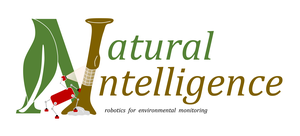Natural Intelligence for Robotic Monitoring of Habitats (NI)
Of the eight million species found on the planet, both in forests and oceans, one million are at risk of extinction, mainly due to global warming and pollution.
What are the EU's responses to these challenges? A series of profound transformation policies contained in the European Green Deal.
Among these policies an important role is given to the recovery and conservation of habitats.
How? Through the protection of territories rich in biodiversity and thanks to the monitoring of the conservation status of the habitats.
Natura 2000 represents the largest network of protected natural areas in the world with its coverage of 18% of the European land area and 6% of the marine areas, with a forecast by 2030 of a 30% increase in coverage.
The European Directives 92/43 / EEC “Habitat” and 79/409 / EEC “Birds” establish Special Conservation Areas which make up the Natura 2000 Network.
In Italy, the Natura 2000 network covers 19% of the terrestrial territory and 13% of the marine one.
The conservation status of the habitats must be guaranteed by the Member States through monitoring activities and conservation actions.
The results of the monitoring must be periodically transmitted to the European Commission every six years, through the preparation of a National Report.
 l
l
The Natural Intelligence (NI) project has the main objective of covering new areas of application for robots, using technologies to guide their movement in the field and installing specific sensors for the detection of data useful for monitoring natural habitats.
The robots of the NI project will be enhanced with artificial intelligence, stimulated by interaction with the environment, in which the fusion of physical (body) and cognitive (sensor) capabilities will be able to provide:
- automatic identification of plant species and habitats
- autonomous movement in the environment
- adequate interaction with the physical environment by adapting to the types of terrain.

ISPRA will collaborate in the definition of the case studies and the calibration of the functional requirements of the robots (sensors), it will also follow the evolution of the functions related to environmental monitoring by evaluating which technologies will have reached a satisfactory degree of maturity for their inclusion in the guidelines for monitoring. habitats of Community interest, the first version of which was published in 2016 (ISPRA series MLG 142/2016).
The project benefits from the funds provided by the European program for research and innovation Horizon 2020, the total budget is € 3,053,428.75.
The project formally started in January 2021 and the expected deadline is March 2024.
It will take place in partnership with the University of Pisa (Coordinator), and with several European research centers:
Switzerland Eidgenössische Technische Hochschule Zürich - ETH ‐ Z, Spain Consejo Superior de Investigaciones Científicas, CSIC, United Kingdom Imperial College London and Kingston University,
Netherlands Technische Universiteit Delft,
Italian private partner, Qbrobotics s.rl
Further information: official web site


